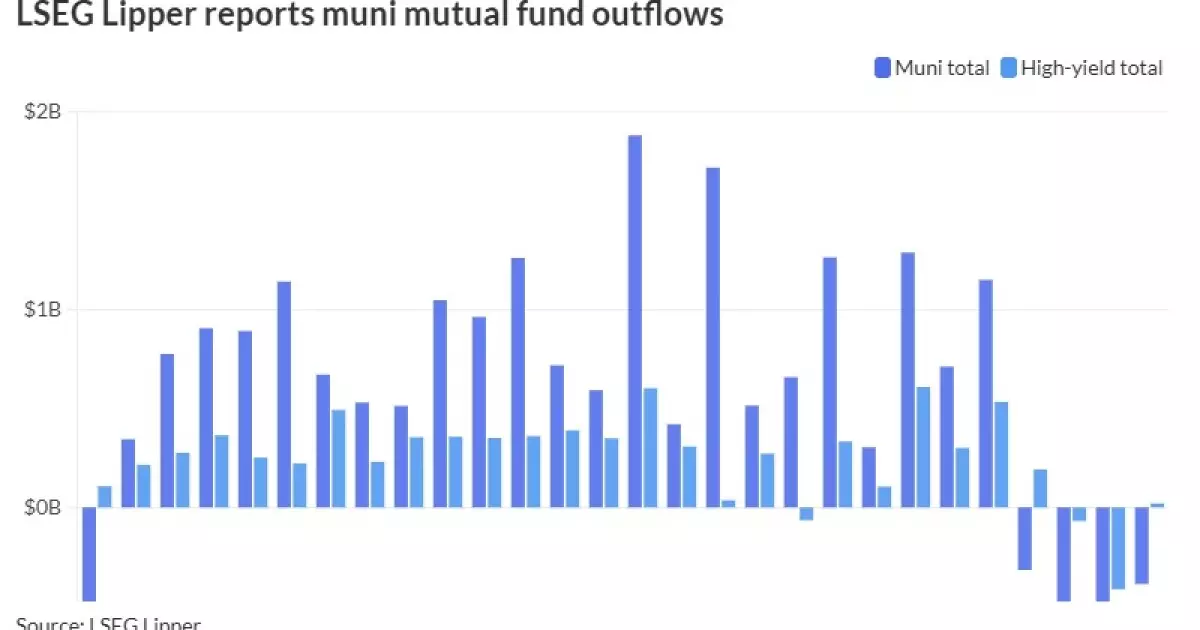The transition into the new year typically heralds shifts in investor behavior, and 2025 is no exception. The municipal bond sector has initiated the year with a notably optimistic tone as investors deploy their January reinvestment capital. This development contrasts sharply with the mixed performance observed in U.S. Treasury securities and a downturn in equity markets, presenting a nuanced picture of the financial landscape.
As 2024 wrapped up, municipal bond mutual funds experienced significant outflows, with nearly $387 million withdrawn in the final recorded week of the year, following a dramatic outflow of over $878 million the week prior. Despite these trends, high-yield municipal bonds managed to reverse the tide, attracting fresh inflows and marking a potent end to the year for the sector. Such dynamics reflect investors’ shifting priorities and the overall resilience of high-yield municipals in the face of broader market challenges.
Yield performance is a critical metric in assessing the health of the municipal market. High-grade municipal bonds in the 10-year maturity segment opened 2025 yielding above 3.00%, a benchmark not seen since 2010. This upward movement is indicative of greater risk tolerance among investors and a comparative decline in relative risk on the part of high-grade municipal offerings, a factor that many analysts view as promising for sustained investment in this segment.
A deeper dive into the total returns for municipal bonds reveals critical insights. December recorded a total return of -1.46%, pulling the overall yearly return down to a modest +1.05%, as captured by Bloomberg indices. While this performance outpaced the much lower returns of U.S. Treasuries (0.58%), it still lagged behind corporate bonds (2.13%). This variation highlights the relative strength but also illustrates a cautious position among municipal bonds, particularly as certain sectors such as the Intermediate Range faced notable pressures.
Furthermore, 2024’s performance has shown stark contrasts among different municipal indices. For instance, riskier sectors like Investment Grade Revenue (IDR) and BBB-rated bonds showcased resilience, outperforming expectations against a backdrop of yield duration pressures. Conversely, long-duration bonds took substantial losses in December, leading to a further flattening of the yield curve for these securities, reflecting investor sensitivity to interest rate fluctuations and macroeconomic forecasts.
Economic Influences and Future Projections
Looking ahead, several factors are poised to influence the municipal bond market in 2025. The consistency of economic conditions appears crucial in determining the performance trajectory of this asset class. Analysts, such as Kim Olsan from NewSquare Capital, suggest that a stable economic environment which safeguards revenue streams for relevant projects is paramount for bolstering investor confidence in municipal bonds.
Increasing demand for tax-exempt and taxable municipal indexes, even amid volatility in U.S. Treasury yields, presents an intriguing narrative. The Taxable Municipal Index experienced a decrease of 2.46% in December but still managed to conclude the year with a 1.5% gain, slightly ahead of Treasury and corporate index returns. This contrast underscores the evolving strategies employed by investors who are looking to maximize yield amid a changing rate environment.
The municipal bond market’s performance at the start of 2025 underscores both challenges and opportunities. The initial reinvestment activity reflects robust investor engagement, countering the observed outflow trend from mutual funds. Looking forward, the landscape suggests a potential increase in supply could materialize, particularly if U.S. Treasury rates decline, as this would make advance refunding more appealing.
As the market continues to balance between risk and yield, municipal bonds may serve as a stabilizing force, providing essential income and investment diversification in a portfolio. All eyes will be on the macroeconomic indicators in the coming months, which will ultimately set the tone for the performance of municipal bonds throughout 2025. Investors can expect a year filled with strategic recalibrations, especially as they navigate through potential interest rate adjustments and evolving fiscal dynamics.

